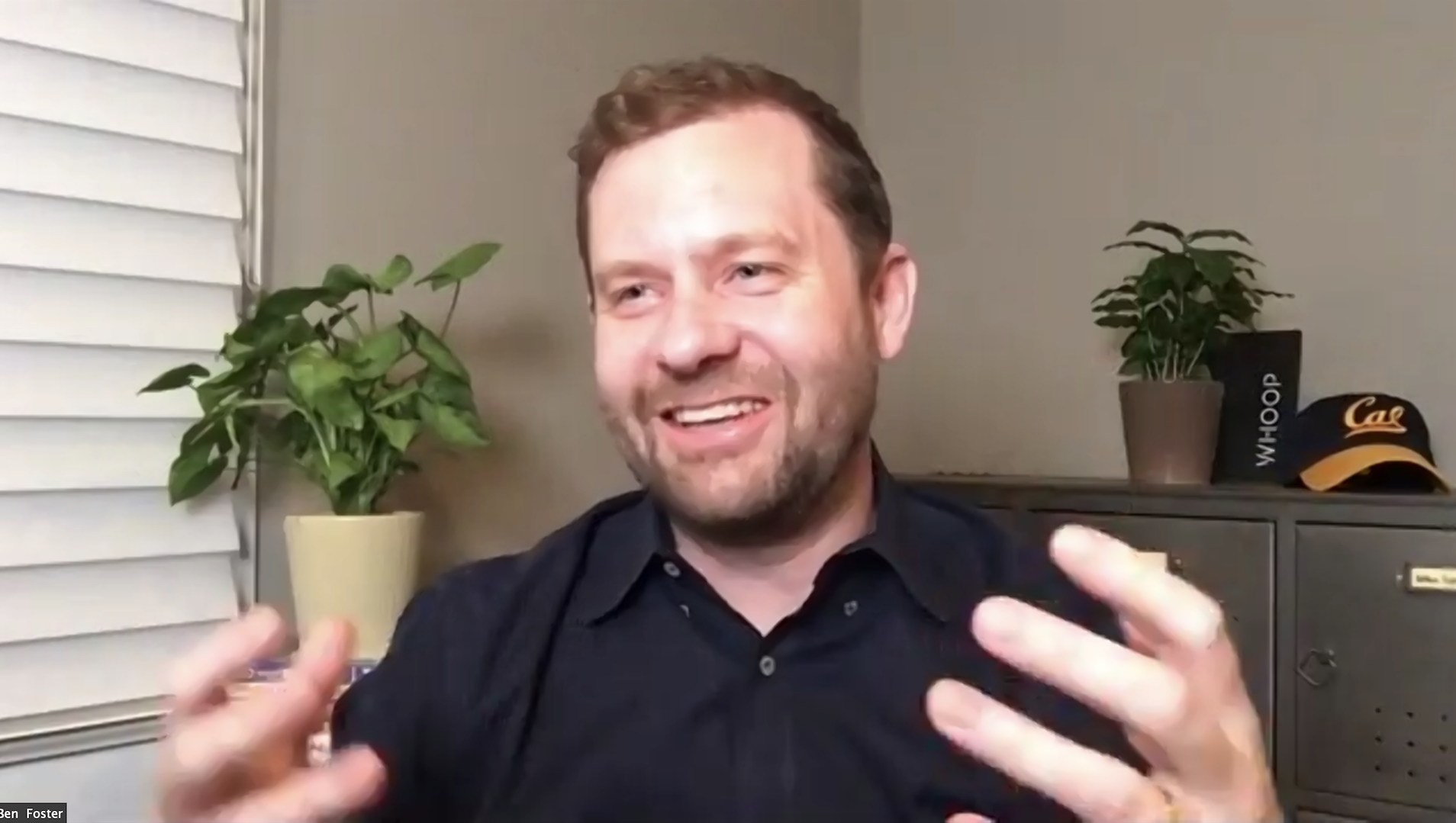If you want to be a product-driven organization, don’t focus on creating the perfect product for your customers.
That may sound strange, but true product-driven organizations define their target market, pooling together customers with various, but specific needs, and then try to build the best product to satisfy most of those needs. That solution won’t be perfect, but it’ll be close enough.
Product-driven companies embrace that reality, Prodify co-founder and WHOOP chief product officer Ben Foster told people who attended ProductTank Waterloo’s last virtual meetup.
Product management is actually all about business strategy, said Foster, who wrote Build What Matters: Delivering Key Outcomes with Vision-Led Product Management, with his Prodify co-founder Rajesh Nerlikar.
Product managers have to think about who is the target market, what’s the product that will serve that target market, and where is the target market headed?
“How do you skate to where the puck needs to be? It’s a lot harder, it’s a lot more complex,” said Foster.
And it doesn't help that product management is full of paradoxes, said Foster. Product managers are expected to fail fast but be innovative, be bold but de-risk projects.
Amazon’s Jeff Bezos would say you’re supposed to be really customer-centric, said Foster, while Apple’s Steve Jobs would say that innovation means saying no to dozens of things.
"So people are left wondering, how do I reconcile all this stuff? People don’t have answers to those questions, which makes product management and being product-driven a challenge because of many different interpretations of what that means," said Foster.
If you’re truly a product-driven company though, you’re not asking your product manager to help the sales team meet their targets in a specific quarter, he said. While solely focusing on profitability might work well for sales-driven companies who succeed by saying yes to their customer requirements, that doesn’t work for product-driven companies because it doesn’t scale well, said Foster.
Product-driven companies don’t just take customer feedback about what they want in a product at face value. They interpret what their customers are saying and build a great product from there.
He used cell phones as an example. It’s a product that doesn’t meet every customer’s specific needs — some may want bigger screens, some may want smaller, for example — but it’s close enough that we all have one. But if we insisted on a customized phone for our specific wants and needs, it would be expensive and take too long to make, rendering it obsolete, said Foster.
“That’s not a good experience for you as a customer. The fact that can be quickly deployed is beneficial to you,” said Foster.
And that approach allows product-driven companies to make small improvements to their product that benefits customers, but that customers have also come to expect. Let’s take that phone again for example. Customers expect minor tweaks or improvements to certain features, such as security. Those improvements provide value for customers, but they also help the business meet its own goals.
“So one type of company continues to grow and continues to innovate and improve their product and the other doesn’t. The person who is stagnant is not just the company that delivers that software, but the customer as well. So that’s what I think it means when I say that this is very foundational. It changes the way we interact with our customers. It means we need to take the time to define our target market,” said Foster.
“We’re the ones figuring out for customers which innovation is going to make sense. They are outsourcing their innovation to us as product managers and it’s our job to deliver that.”
That puts a lot of pressure on product managers and can lead to what Foster calls the top 10 dysfunctions of product management. Those dysfunctions happen because of a void that exists in product leadership to present a vision and strategy that everyone can rally around, said Foster.
“If you can make a case about where you’re going with a product, then suddenly all those dysfunctions and one-off requests start to vanish and if they don’t vanish you can make a really smart decision about the tradeoffs,” he said.
Some of those tradeoffs mean being smart about where you say yes to customers and where you say no, he said.
So how do you balance that?
Start with a product-driven framework. Define the outcome metrics that your customers care about and that you care about as a business and look for the ones that overlap.
“If you can focus your attention in those areas, then you can deliver customer value,” said Foster.
Next, have a customer journey vision. Your revenue and your growth as a company is a byproduct of the value that you create for customers. That’s how you connect the dots between making your customers successful and making your business successful, said Foster.
"If a vision is like planting a flag at point b and you are at point a today, your vision is the path you take to get from one point to the other. You can plot your course and it’s very rarely going to be a straight line but you can share that with the rest of the company and say, ‘Here’s our plan for where we’re going,’ ” he said.
Foster ended his talk by issuing a series of challenges to founders and those who work in product:
- Find a way to deliver customer value by translating your own business goals back into customer value.
- Give product managers the space to say no in different places.
- Share your vision if you’re a product leader. Communicate it in a way that people really understand.
- Ask good questions if you want to be in a product manager role. Make your leaders give you answers, force them to communicate, and force conversations about product roadmaps earlier. Then be committed to it and move toward it.
After Foster’s talk, attendees had a chance to ask questions. Taking questions from the audience, Zeitspace partner Jeff Fedor, who also co-organizes ProductTank Waterloo, asked Foster whether he had any advice for people when establishing their initial product vision.
Foster suggested focusing on what you're doing to create a customer outcome that the customer cares about that is ten times better than what it is today. If you're not doing that, your orientation is too inward focused, he said.
“Nobody disrupts an industry directly. You disrupt an industry because you solve a customer problem so well that nobody can ever keep up with you again. It fundamentally transforms the way that customers and vendors work together,” said Foster.
You do that making incremental steps along the way until you have a product-market fit.
Tesla is a good example of product-market fit, said Foster. The company started with the goal of just getting some customers to buy an electric car, so they released a minimal viable product. Next, they decided to build and sell a luxury sport vehicle, using that capital to fund their investment. But they had to make major strategic decisions along the way because eventually they had to compete with other cars. Tesla's biggest issue was that their electric cars didn’t have the range. So instead of building a bigger battery, they thought: How can we make it so that you can go anywhere? Now, electric vehicle charging stations aren't hard to find.
Fedor also asked how product managers know when they have the right product vision and how to validate that product vision.
Foster began by referring to a quote in Marty Cagan’s book Inspired: How to Create Tech Products Customers Love.
“If you’re looking for validation of your vision, all that is is an indication that you’re not thinking boldly enough. It’s a vision. It should be five years out,” he said.
You can have a longer term vision, Foster said, but that comes with more risk as well. Have a sense of where you’re going at a given point in time, he suggested. Rarely will your vision be radically off. And remember the company you’re working for was once a startup predicated on a vision.
In terms of validating your product vision, Foster suggested talking to former founders and others companies who have tried to do this before. And talk to customers. What is the direction that customer expectations are headed?
Focus on validating the problem, rather than the specifics of the solution, said Foster.
“I would argue that that’s work you’re doing that’s probably holding you back rather than helping you move forward,” he said. “I would focus on problem level validation versus thinking about the individual specifics of the product itself. That’s going to be done in market experimentation through things like usability testing along the way.”
The next ProductTank Waterloo monthly meetup is a joint session on Nov. 19 with uxWaterloo and features Scott Berkun, who will talk about his new book, How Design Makes the World, while also offering advice about how to make design and user research more influential in your organization.





